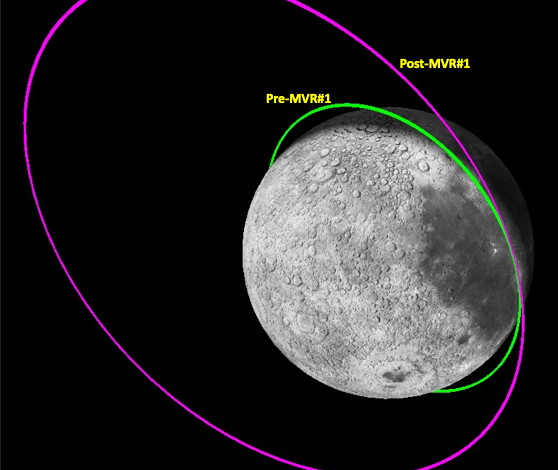Chandrayaan-3 Propulsion Module Successfully Transitions from Lunar to Earth Orbit

In a groundbreaking achievement, the Chandrayaan-3 Propulsion Module (PM) has made a historic journey from lunar orbit to Earth’s orbit, marking a significant milestone in India’s space exploration endeavors.
The Chandrayaan-3 mission, launched on July 14, 2023, aimed to showcase a soft landing near the lunar south polar region and conduct experiments utilizing the instruments on Vikram and Pragyaan. The mission’s primary objectives were fully achieved, with Vikram Lander making a historic touchdown on the Moon on August 23rd, and the Pragyan rover being successfully deployed.
The Propulsion Module’s primary role was to transport the Lander module from Geostationary Transfer Orbit (GTO) to the final lunar polar circular orbit and facilitate the separation of the Lander. Following the separation, the Spectro-polarimetry of Habitable Planet Earth (SHAPE) payload in the PM was activated. Originally planned to operate for three months, the efficient orbit injection and maneuvers resulted in over 100 kg of available fuel after a month of lunar orbit operations.
Utilizing the surplus fuel, the decision was made to re-orbit the PM to a suitable Earth orbit to gather additional information for future lunar missions. The intricate mission plan, developed with collision avoidance measures, targeted an optimal Earth return trajectory for October 2023.
The PM’s journey included raising the apolune altitude on October 9, 2023, to increase the orbit period, and a Trans-Earth Injection (TEI) maneuver on October 13, 2023, to set the PM on a course towards Earth. The PM made four Moon fly-bys before departing the Moon’s Sphere of Influence (SOI) on November 10.
As of November 22, the PM is orbiting Earth, having crossed its first perigee with an altitude of 1.54 lakhs km. The orbit period is approximately 13 days with a 27-degree inclination. Notably, there are no predicted close approaches to operational Earth-orbiting satellites.
The SHAPE payload is actively operated whenever Earth is in its field of view, and a special operation was conducted during a Solar Eclipse on October 28, 2023. The UR Rao Satellite Centre/ISRO’s flight dynamics team developed an analysis tool for this operation, emphasizing trajectory planning, maneuver execution, gravity-assisted flybys, and avoiding uncontrolled crashes on the Moon’s surface, aligning with stringent debris prevention requirements.







